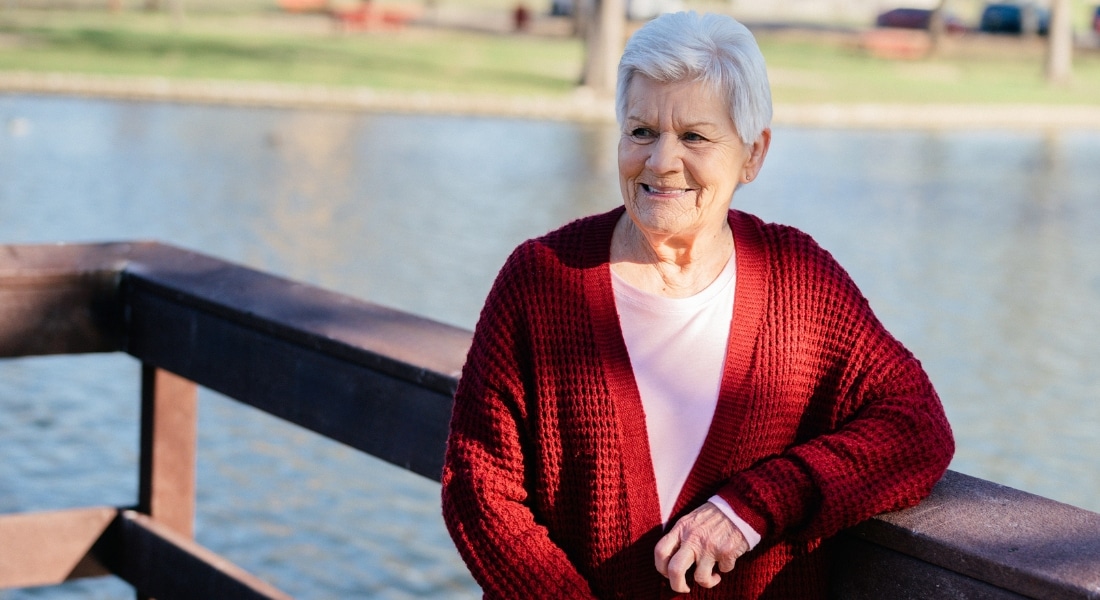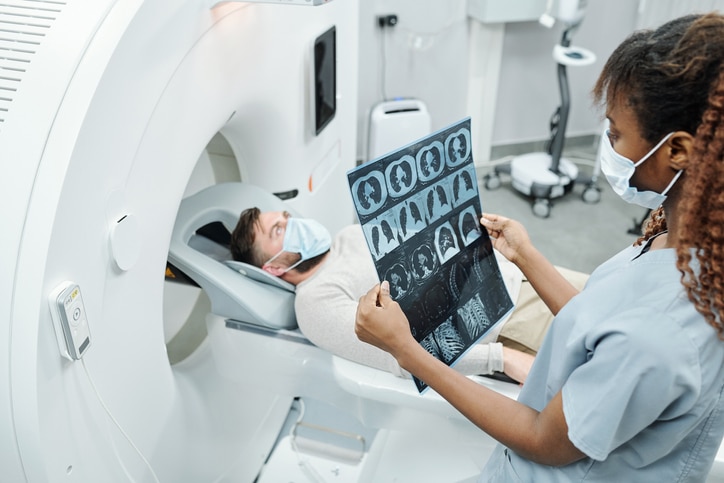As a lifelong smoker, Marianne Kirkwood wasn’t surprised to learn she had lung cancer, but she was amazed to be declared cancer-free a few months after her diagnosis, thanks to advanced treatment at Methodist Richardson Medical Center.
Marianne kicked the habit a few years ago, but understanding the risks from her career working in insurance, she sought out a low-dose CT scan of her lungs when her primary care physician suggested a preventive screening.
“I quit smoking a few years ago after recovering from respiratory failure during back surgery,” the 78-year-old Mesquite resident says. “I was used to getting chest X-rays but thought it couldn’t hurt to get a more thorough look at my lungs.”
That scan revealed a small nodule in her lungs, so her decision may have saved her life, says her doctor, Mitchell Magee, MD, thoracic surgeon on the medical staff at Methodist Richardson.
“Thousands of lives would be saved each and every year if more people who fit the criteria got an annual low-dose CT scan instead of a chest X-ray,” Dr. Magee says.
Marianne now considers Methodist Richardson her “go-to hospital” because she says every step of her treatment and surgery has been exemplary.
“Every single staff member I encountered was fantastic,” Marianne says.
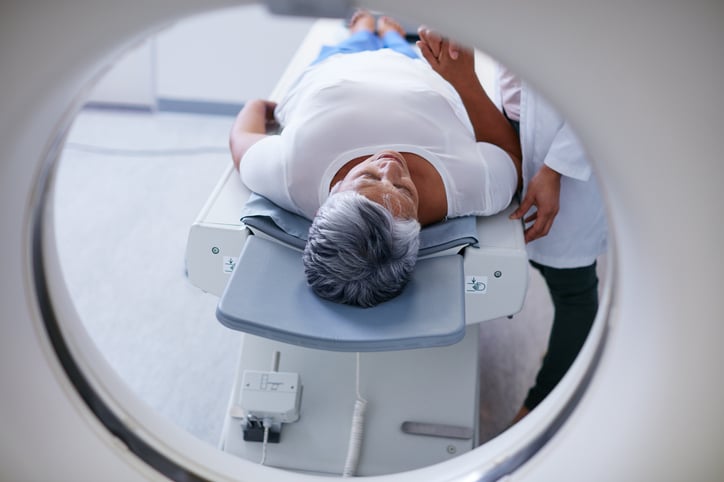
A CT scan can detect lung cancer in its earliest stages before it’s too late to treat effectively.
SCAN REVEALS NODULE
A decade ago, Marianne learned she had emphysema, a diagnosis that prompted her to begin routine lung screening.
That’s because lung cancer claims more American lives each year than colon, breast, and prostate cancers combined, and diagnosing the disease as early as possible is critical to effective treatment. Because lung tissue lacks pain receptors, cancer often progresses silently until it spreads beyond the lungs.
The good news is that doctors have proven screening tools at their disposal to detect lung cancer — starting with a simple, low-dose computed tomography (CT) scan. For such a scan, the patient lies on a table that slides into a doughnut-shaped X-ray machine that takes multiple images that can be combined into a detailed 3D picture of the lungs.
When Marianne’s scan revealed a nodule in her left lung, she wasn’t shocked, having been a smoker for decades.
“Given my history, it wasn’t terribly shocking,” she says, “but I knew I wanted to act quickly given my knowledge of diseases from working with health insurance claims for many years.”
Marianne was referred to a pulmonologist who explained that in these cases a biopsy is the next step. But the location of her nodule, in the apex or top of her left lobe, made a biopsy too challenging, and it was recommended that she see a surgeon to consider removing the nodule.
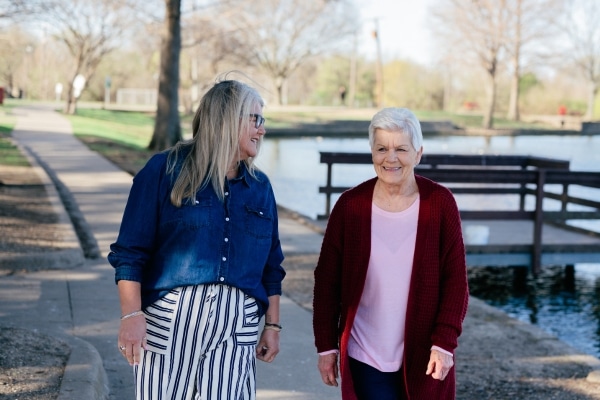
Marianne’s daughter Kjersti Spangler was by her side throughout her cancer journey.
MINIMALLY INVASIVE
Marianne’s pulmonologist sent her to see Dr. Magee, who met with Marianne and her oldest daughter, Kjersti Spangler, to discuss her options.
“Marianne quickly understood the biopsy challenges and that her scans pointed to the nodule being highly suspicious for lung cancer,” Dr. Magee says.
He advised Marianne to have the growth removed because it would both confirm the diagnosis and provide definitive treatment if the nodule was cancerous. She agreed.
On June 21, 2024, Marianne underwent a procedure known as a wedge resection that only required three small, “keyhole” incisions. In this minimally invasive surgery, the nodule is removed, along with a wedge-shaped section of the lung around the tumor.
“Wedge resections often better preserve overall lung function since a smaller amount of lung is removed,” Dr. Magee says. “That leads to a faster recovery.”
In Marianne’s case, that meant she was discharged from the hospital in a few days and back to work within a week.
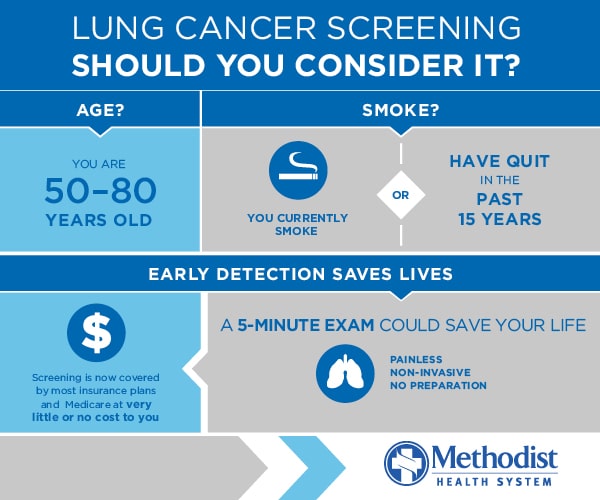
WHO NEEDS SCREENING
It turns out that Marianne’s nodule was cancerous, and Dr. Magee says her decision to seek out a CT scan, rather than standard chest X-rays helped diagnose her cancer early, possibly saving her life.
“Recent data proves that chest X-rays are not capable of detecting early-stage lung cancers the way low-dose CT scans can,” he explains. “More people who fit the criteria should consider getting an annual CT scan.”
Screening is recommended for smokers, past or present, between 50 and 80 years old who smoked a pack a day for 20 years or more. Doctors ask that patients protect their health and don’t let the stigma of smoking or its consequences prevent them from seeking care.
“I’ll do all I can to get this message out to as many doctors and patients as possible to continue saving lives,” Dr. Magee says.
For Marianne’s part, she’s glad she received the treatment she needed, just in time, and that she found her way to Methodist Richardson, for her peace of mind and her family’s.
“Not only did they take extremely good care of me with a wonderful bedside manner,” she says, “but they didn’t hesitate to keep my kids updated.”

